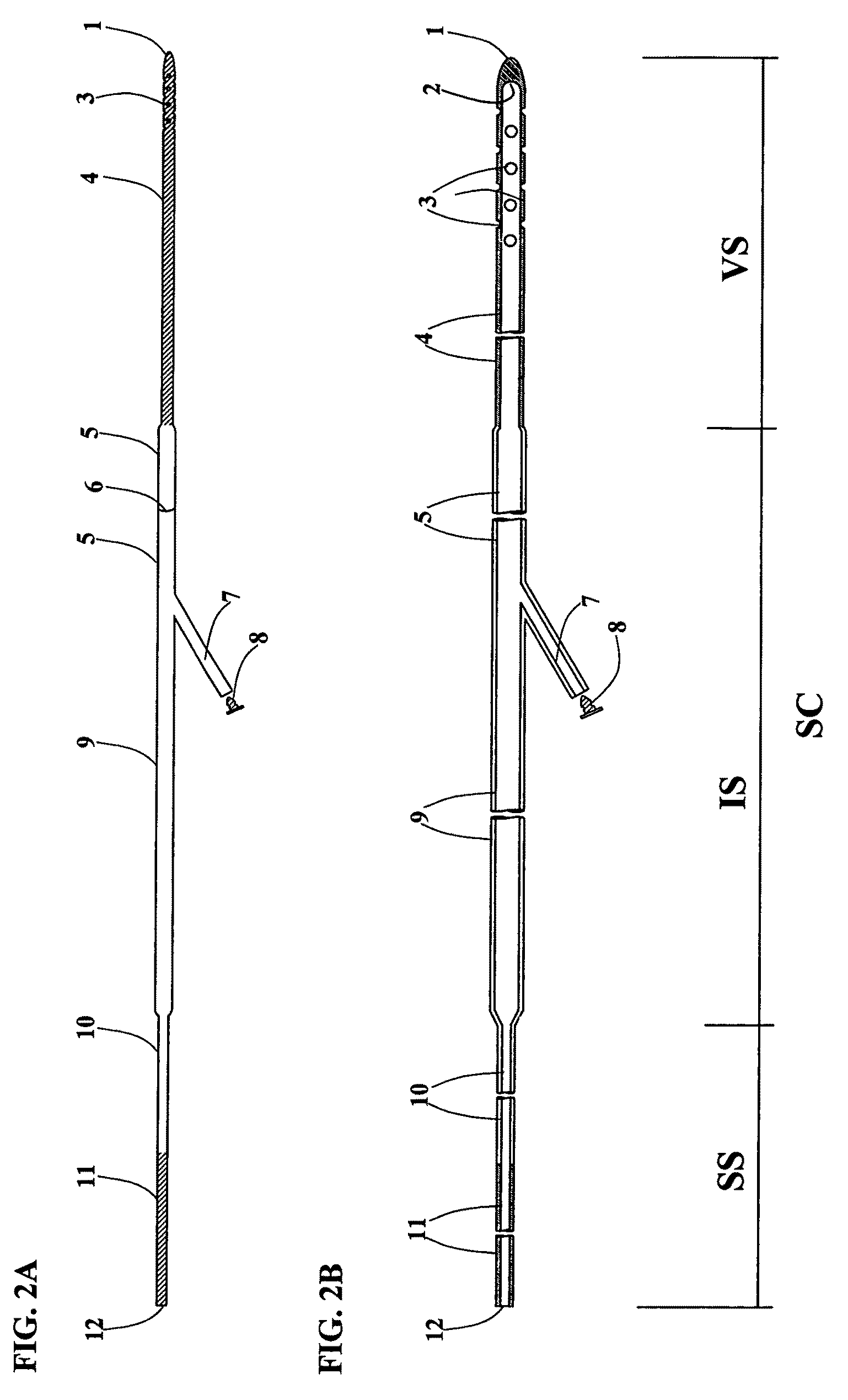Device for implantation of retrograde ventriculo-sinus shunt
a ventriculo-sinus shunt and retrograde technology, applied in the field of surgical arts, can solve the problems of excessive reduction of the cerebrospinal fluid pressure within, syphonage and thromboembolic complications, and excessive syphonage, so as to prevent syphonage and reflux of blood, avoid problems and complications, and prevent reflux
- Summary
- Abstract
- Description
- Claims
- Application Information
AI Technical Summary
Benefits of technology
Problems solved by technology
Method used
Image
Examples
Embodiment Construction
[0079]On theoretical, experimental and clinical basis it was concluded that a physiological way for treatment of hydrocephalus is to implant retrograde ventriculo-sinus shunts. Provided the connection is watertight allowing no leakage of cerebrospinal fluid, this way of cerebrospinal fluid shunting utilizes natural forces, to prevent siphonage in the erect posture, to prevent regurgitation of blood into the shunting catheter as a result of changes in posture or intra-thoracic pressure, to normalize the intra-ventricular pressure, to maintain a steady unidirectional flow of cerebrospinal fluid to the venous circulation at a rate equal to the rate of it's formation and to discourage stagnation and clotting of blood at the sinus end of the connection. Therefore, a valveless shunting catheter can be used to establish the connection and the need to incorporate artificial flow control devices into shunting catheters is eliminated. Thus, the first innovation is to utilize natural forces in...
PUM
 Login to View More
Login to View More Abstract
Description
Claims
Application Information
 Login to View More
Login to View More - R&D
- Intellectual Property
- Life Sciences
- Materials
- Tech Scout
- Unparalleled Data Quality
- Higher Quality Content
- 60% Fewer Hallucinations
Browse by: Latest US Patents, China's latest patents, Technical Efficacy Thesaurus, Application Domain, Technology Topic, Popular Technical Reports.
© 2025 PatSnap. All rights reserved.Legal|Privacy policy|Modern Slavery Act Transparency Statement|Sitemap|About US| Contact US: help@patsnap.com



